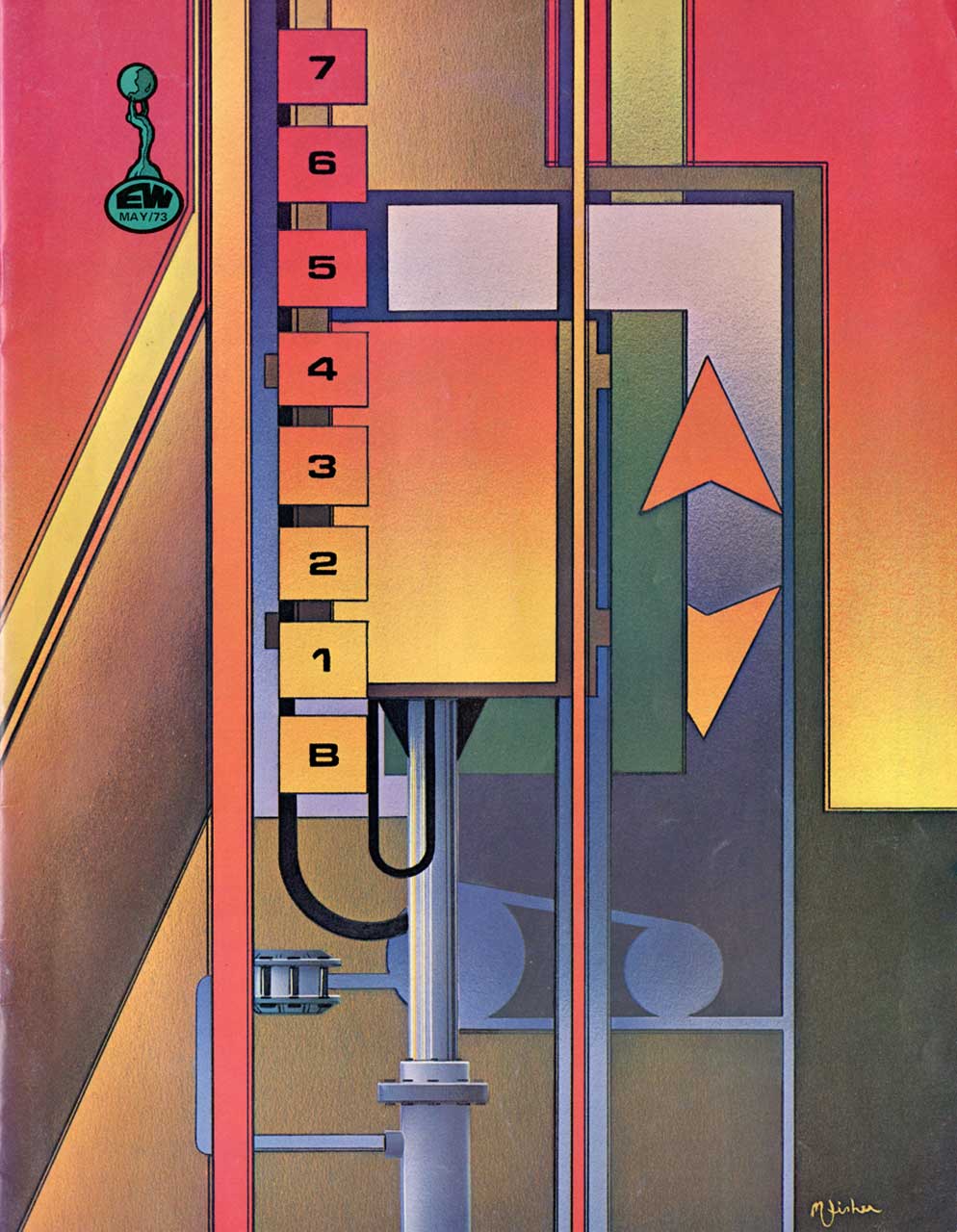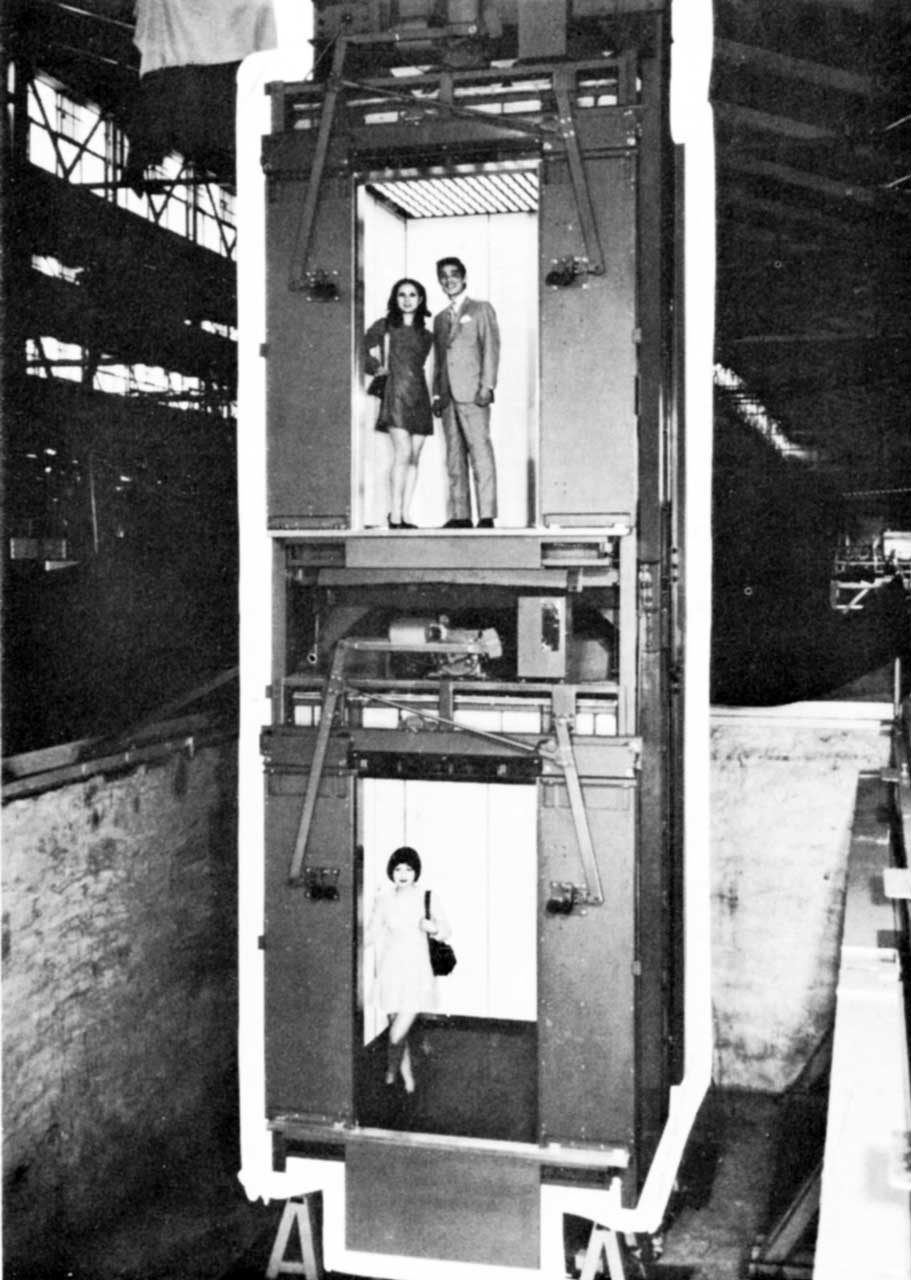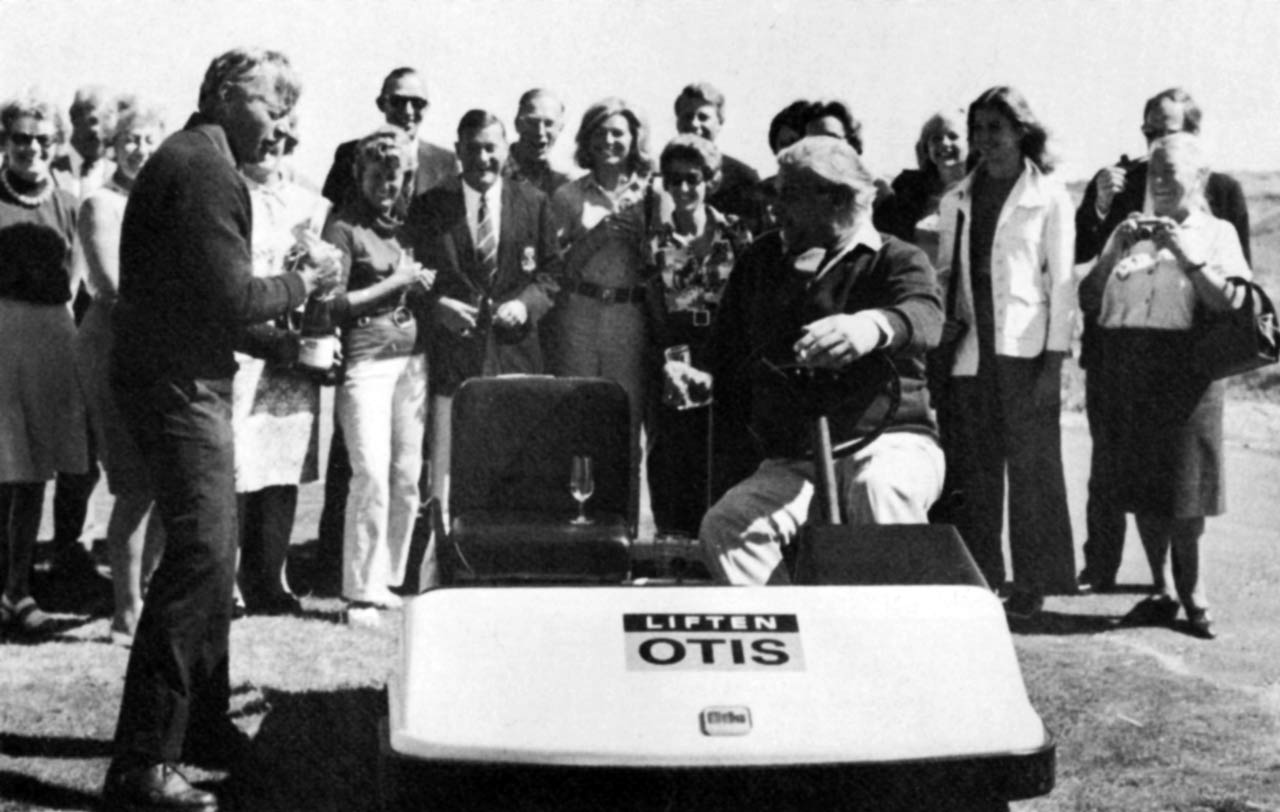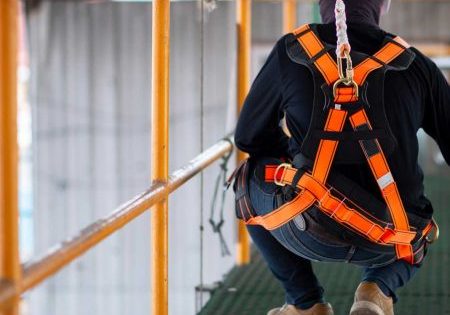1973
May 5, 2023

ELEVATOR WORLD celebrates its 20th year.
It is interesting to note that ELEVATOR WORLD founder William C. Sturgeon did not acknowledge or celebrate the fact that the magazine had entered its 20th year until the March 1973 issue.[1] This acknowledgement included a general reminiscence about the founding of EW and a reaffirmation of the magazine’s commitment to serving as the primary means of communication and information dissemination within the vertical-transportation (VT) industry: “Although the format, general content, columns, contributors and staff have changed considerably,” the mission statement found in the “first issue still holds true — we exist to serve the companies and the people within the industry.”[1]
While Sturgeon’s precise reason for delaying recognition of this anniversary until the year’s third issue is unknown, a review of the contents of the January and February issues reveals that EW entered the new year with an expanded mission that reflected events from its immediate past. Thus, perhaps, Sturgeon made a strategic decision to wait until March to “pause” and celebrate so as to not lose editorial momentum.
The magazine’s expanded mission was reflected in a series of new columns, new staff members and new contributors. The new columns included “Lighting Up the Shaftway,” “Innovation,” “Dateline Washington,” “A Matter of Association,” “Outlook from the Orient” and “Contact: The Science of Relating People and Products.” “Lighting Up the Shaftway,” which first appeared in February 1969, was directly linked to a new VT industry initiative, which Sturgeon described in his introduction to the first column:
“During a meeting of Subscription Members at the annual meeting of the National Association of Elevator Contractors, Don Wiseman, Elevator Safety Division Chief of Michigan’s Department of Labor, stated that a number of the governmental elevator inspectors throughout the United States and Canada had expressed enthusiasm over a projected formation of a national association … Time did not permit an in-depth investigation of the exact nature such a group might assume but out of the discussions came an ‘ad hoc’ committee composed of Don Wiseman, John Miller, and myself which accepted the responsibility of further exploration … Your editor stated that Elevator World would be happy to act, initially, at least, as a communications media for those within the inspector-consultant group and establish a column within which these categories could interact.”[2]
This proposed initiative — the creation of a new VT industry association — echoed the effort that resulted in the establishment of the National Association of Elevator Contractors (NAEC) in the year prior to EW’s launch in 1953. Once again, Sturgeon and his magazine were providing leadership and resources needed to address an emerging critical need.
The fruits of these efforts were revealed in the July 1971 “Lighting Up the Shaftway” column, which announced the creation of the National Association of Elevator Safety Authorities (NAESA):
“The purpose of this association will be to promote, foster, and assist in the promulgation of a standard elevator safety code and to exchange and impart information of common interest … The membership of the association is to be comprised of federal, state, and municipal officials whose primary responsibility and function is the application and enforcement of elevator safety codes.”[3]
NAESA’s first annual meeting took place later that year, and the January 1973 issue included a feature article on the organization’s second annual meeting, held in November 1972. The meeting, described as a “National Workshop,” focused on “the problems of the code developers and of the elevator companies that have to work with the codes.”[4] Featured speakers included William C. Crager (chair of the A17.1 Executive Committee), Mark L. Mount (National Elevator Industry, Inc. (NEII) code engineer) and John J. Klocke (chief, Materials Handling Division, OSHA).
The “new” feature titled “Innovation,” which focused primarily on new products, was, in fact an “older” feature that had previously been labeled “New Equipment.” In November 1969, the new title appeared; this rebranding was intended to better reflect the industry’s overall inventive and entrepreneurial spirit. A different kind of spirit was found in “Dateline Washington,” which debuted in August 1970. The column was a monthly summary of governmental debates, decisions and decrees. Its author, Peter S. Nagan, had served as Washington correspondent for Business Week and had edited the “Report on Business Outlook” for the Bureau of National Affairs prior to joining EW. John Hicks, author of “A Matter of Association,” also brought a wealth of experience to his column; however, in this instance, it was directly related to the VT industry. When the column first appeared in July 1971, Hicks was serving as the executive director of NEII. He had joined NEII’s predecessor, the National Elevator Manufacturing Industry, Inc. (NEMI), in 1964. In 1967, he was named executive director and oversaw the transformation of NEMI into NEII in 1969. His column focused on a broad range of NEII initiatives and related news.
The July 1971 issue also included the first in a new series that addressed the VT industry in Asia: “Outlook from the Orient.” The column’s primary author was Ken’ichi Kawashima, a consulting engineer and 35-year veteran of the Japanese VT industry. He contributed four columns in 1973, one of which featured material contributed by Toshio Fukuda. Kawashima was, in fact, one of six EW foreign correspondents. The others were David M. Fazakerley (U.K. correspondent), Umberto Sermedese (Italian correspondent), Johannes Kleemann (German correspondent), Ehlver Hallberg (Scandinavian correspondent) and John Inglis (Australian correspondent). Many of these names are doubtless familiar to long-time readers and VT industry members, and their presence reflected EW’s increasing coverage of international industry events.

The origin of the last new column, “Contact: The Science of Relating People and Products” (which first appeared in March 1973), was the subject of Sturgeon’s opening editorial for the year.[5] In 1969, he had created the “Contact Department,” a new division designed to handle requests for reprints of past articles and issues. Sturgeon noted that the impetus for the new enterprise dated back to 1963 when the magazine “began receiving requests from contractors for reprints of ‘In Search of the Past’ to be personalized for distribution to their clients.”[5]
In addition to providing reprints, the new department also produced dedicated event-related publications, which included NAEC’s “Key to Elevator Planning” and “the association’s first income producing convention program.”[5] The Contact Department also provided copies of EW that featured customized company labels affixed to magazine covers for distribution to clients. In 1972, the product line was expanded to include reprints of elevator-related artwork; among the most popular were original works created by illustrators Mike Fisher and Jim Lee (Figure 1). The Contact Department was led by EW Editor and Publisher Ricia Sturgeon-Hendrick, who, in 1973, served the magazine as an associate editor. The “Contact” column focused on “best practices” in business and communication.
In his June editorial, Sturgeon, as a prelude to announcing the topic of the 1973 Annual Study, summarized the history of these unique issues:
“During the past eleven years of its twenty-year existence, Elevator World has published an Annual Study. In 1963, it was ‘In Search of the Past,’ the first history of vertical transportation; the following year ‘People in Motion’ analyzed mass-people-moving equipment. In 1965 and 1966, we edited Parts I and II of ‘Packages in the Sky,’ the most detailed study to date of ‘industrialized building’ and the ‘rationalized elevator industry’ in Europe and, in 1967, we published the first comprehensive study of the aerial ropeway industry written in any language, ‘Men and Machines Against the Mountain.’ The following year, the late Paul Kern’s ‘Rail Clips and Call Backs’ compilation was well received by our industry’s field men. In 1969, we assembled a study on ‘Towers;’ in 1971, ‘Japan and its Elevator Industry’ and, last year, ‘Earthquakes and Elevators.’”[6]
Sturgeon had intended to focus the 1973 Annual Study on “horizontalators,” people movers developed for transporting passengers in large airport terminals. His plans, however, were changed at the April NAEC directors meeting, where he was asked to pursue “the subject of ‘OSHA’ and ‘Safety Programming.’”[6]
With this new goal in mind, Sturgeon reported that he and his staff were “involved with the safety engineers of a half dozen of the larger manufacturers in developing an Annual Study on The World of Elevator Safety.”[6] This effort included a two-day conference held at EW’s headquarters in Mobile, Alabama, which was attended by representatives from eight leading VT firms (Figure 2).
As work on the Annual Study progressed, the project expanded to include a parallel document: a new Field Employees’ Safety Handbook, which was designed to be easily carried by technicians and mechanics (the 84-page guide measured only 3.5 by 5.5 in.). Its table of contents touched on a broad range of topics: Safety responsibilities of the mechanic in charge, General safety requirements, Safe wearing apparel and personal protective devices, Precautions when working around electrical equipment, Hoists and slings, Scaffolds, Barricades, Portable ladders, Portable electric tools, Mechanic’s hand tools, Welding and cutting, Safety when elevator is operative and Escalator safety rules. The text was accompanied by 26 tables, illustrations and charts. The handbook concluded with a section that addressed the following topics: Safety program, Safety coordination, Safety inspections, How people get hurt, Safety coordinators check list, Toolbox meetings 1 thru 24, First aid hints and Hoists signals.

The VT industry’s appreciation of the Annual Study (which appeared in October), and particularly the Field Employees’ Safety Handbook, was immediately evident in letters to the editor. The December issue included six letters expressing thanks for and congratulations on the handbook’s publication. In addition, and perhaps the most tangible “proof” of its success, were the handbook orders found in these letters, which exceeded 2,000 copies. The letters also included a communication from Toshio Fukuda in Japan:
“We were very impressed with the contents of the Field Employees’ Safety Handbook. The Japanese Elevator Association published something similar earlier this year, but it was only 13 pages and lacking informative illustrations. We now plan to publish an auxiliary handbook and wish to know if we might use some of the information within yours?”[7]
The proposed transfer of EW-generated materials to countries outside the U.S. was, in fact, a theme found throughout the year. One such request was made by Horacio Goncalves de Morales of Elevadores Sur S.A., located in Porto Alegre, Brazil. Morales sought permission (which was granted) to translate the 1963 “In Search of the Past” Annual Study into Portuguese.
Once again, Sturgeon and his magazine were providing leadership and resources needed to address an emerging critical need.
The topic of safety was, not surprisingly, a consistent subject explored in articles, columns and other features — including letters to the editor. One safety-related letter, and the published response, serves as a reminder of critical differences between the early 1970s and today. The May issue included a letter from William F. Gallagher, the director of the American Foundation for the Blind:
“Elevators are a problem for the blind, particularly the elderly, and we receive many letters from architects asking what should be included in the building so that the visually handicapped do not become dependent on using sight guides for mobility. We have not seen any standards or guidelines for elevator push buttons. It seems as though we all have our own differing ideas about the type of devices and that there should be a conference of experts in the field of blindness, architects, elevator manufacturers, etc., who could develop the appropriate standards.” [8]

The response to Gallagher’s letter was written by Mount. He stated that only two states, Michigan and Ohio, required “that elevators for the handicapped include braille numerals for the floors located on the car and hall push button stations covers. In addition, an audible signal is required to indicate the floor at which the car has stopped.”[9] Mount went on to add:
“The A17 Elevator Code Committee does not have specific input from groups representing the handicapped, but it does receive suggestions from individuals. I am sure active representation on the A17 Committee would be welcomed. This can be accomplished by writing to the American Society of Mechanical Engineers, Codes and Standards … expressing the desire to have a representative on the committee … Our industry certainly wants to do all it can for the handicapped and if we do not have the proper guidance our efforts will fall short.”[9]
The Michigan and Ohio standards appear to imply that the requirements applied only to “elevators for the handicapped,” thus not all elevators would have included these features. Mount’s response also indicates that code writers had not yet fully engaged issues associated with ensuring accessibility to VT systems. An important point of context is the fact that the Americans with Disabilities Act would not be introduced in Congress until 1988 and would not be signed into law until July 26, 1990. EW and the VT industry’s recognition of these issues speaks to their awareness of the importance of responding to the needs of all users.

As was the case with prior years, EW addressed a diverse range of topics that included serious issues such as VT accessibility, as well as celebratory events. In fact, EW was not alone in celebrating an anniversary in 1973; they were joined by the Inclinator Company (50th anniversary), F.S. Payne Company (70th anniversary) and the Sedgwick Machine Works (80th anniversary).
The year also saw a number of “firsts.” These included the first double-deck elevators installed in Japan.[10] The Osaka-Obayashi Building featured eight double-deck machines built by Mitsubishi Electric Company Ltd. (Figure 3). Another, decidedly not vertical first, was reported by Erik Warners, director of Otis Liften in the Netherlands. He provided a photograph of the first golf cart employed at a Dutch golf course. The cart “was provided by one of the Otis subsidiaries in the United States” and featured the Otis Liften logo (Figure 4). A final EW first may, or may not, have been readily observed by the magazine’s readers. The cover of the January issue featured a new version of the magazine’s logo, which depicts Atlas lifting up the world. The new logo also incorporated a stylized version of the magazine’s initials (EW) in place of the full name on the cover. While the new logo clearly reflected the aesthetics of the early 1970s, its use lasted only six months: The July issue featured the return of the old logo (Figure 5). There is a lot, apparently, to be said for continuity.
References
[1] William C. Sturgeon, “Speaking of Issues: Our Twentieth Year” (March 1973).
[2] William C. Sturgeon, Introduction to “Lighting Up the Shaftway” (February 1969).
[3] “Lighting Up the Shaftway” (July 1971).
[4] “NAESA Holds National Meeting” (January 1973).
[5] William C. Sturgeon, “Speaking of Issues: CONTACT Department” (January 1973).
[6] William C. Sturgeon, “Speaking of Issues: The World of Elevator Safety” (June 1973).
[7] Toshio Fukuda (Toshiba Fuchu Works), “Comments” (December 1973).
[8] William F. Gallagher (Director, American Foundation for the Blind), “Comments” (May 1973).
[9] Mark L. Mount (NEII code engineer), “Comments” (May 1973).
[10] Ken’ichi Kawashima, “Outlook from the Orient” (March 1973).
Get more of Elevator World. Sign up for our free e-newsletter.









